Ancient Chihuahuas in Southeastern U.S.?
Origins of Dog Effigy Pots & Chihuahuas
According to Jessica Zimmer in her unpublished master’s thesis Native Americans’ Treatment of Dogs in Prehistoric and Historic Florida dog effigy pots have only been found in the Midwest and Southeast and no dog effigy pots like those found at Bull Creek have been found in Florida. She concludes:
“Florida groups may not have had dog effigy vessels because they did not have the same religious and spiritual beliefs as groups in the Midwest and Southeast. Florida groups do not appear to have viewed dogs as guardians for the dead or guides to the underworld. They may have refused to accept or make dog vessels because they did not want to assign dogs the role of caretakers for the dead….The lack of dog effigy vessels shows that Florida groups actively resisted an artistic and mortuary tradition that was popular with groups surrounding them for almost 1000 years. Future research may provide more definitive reasons why Florida groups did not make or use dog effigy vessels.”9
This provides strong proof that these pots did not originate in Florida and then travel north up the Chattahoochee River to Bull Creek. The presence of dog effigy pots north and west of Bull Creek suggests they originated in those locations.
Additionally, Chihuahuas are not a native dog of Georgia. All modern Chihuahuas are said to be descended from ancestors first discovered running around the ruins of Casas Grandes, (also known as Paquime) in Chihuahua, Mexico thus the origin of their name. Casas Grandes is 1600 miles west of Columbus, Georgia and also featured pots with dog effigy adornos. These pots appear to represent the Deer Head variety of Chihuahua, the largest of the Chihuahua breed having a head-shape like that of a deer, hence the name.
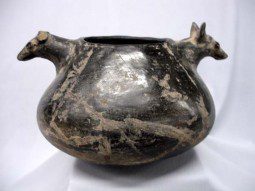 |
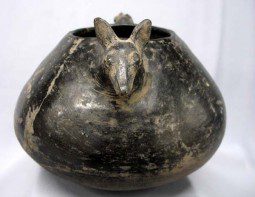 |
|
Casas Grandes Dog Pot (side view) |
Casas Grandes Dog Pot featuring Deer Chihuahua |
 |
|
|
Deer Head Chihuahua |
|
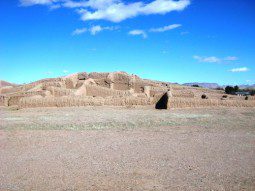
- Ruins of Casas Grandes in Chihuahua, Mexico. (Courtesy Wikipedia)
Interestingly, Casas Grande was violently attacked and destroyed and its residents massacred around 1340 AD.10 The Bull Creek dog effigy pots date to around 1325 AD and later. Casas Grandes was known for its long range trade networks. Did some of its traders or leaders escape the massacre and disappear into the southeastern U.S.?
Casas Grandes is believed to have been either influenced or created by people from west Mexico. Interestingly, similar dog pots were found in the state of Colima in west Mexico which represented the Techichi breed from which most researchers believe the Chihuahua was derived. Both the Colima dog pots and Georgia dog pots were mentioned in Susan C. Power’s book Early Art of the Southeastern Indians: Feathered Serpents & Winged Beings. In this book she noted:
“Dog effigy water bottles have been found at the Lamar sites of Bull Creek near Columbus, at the Nacoochee Mound and Cemochechobee, and at the Neisler site on the Flint River, all in Georgia. The ‘dog pots’ are similar to sculptural ceramic vessels from Tlatilco, Mexico (1200 B.C.), and the Chorrera Culture from Ecuador (500 B.C.); to the Mexican Colima dogs (beginning 300 B.C.); as well as to other vessels from Teotihuacan and the Veracruz region of the Toltec, both in Mexico (Schwartz 1997, 130-32). According to Marion Schwartz, ‘There are striking similarities in the pose and expressiveness of the dogs across time and space and between cultures,’ suggesting the trade of dogs may have been the reason; for example, small dogs found in Florida burials may have been imported from the Caribbean (80, 132).”11
The Colima dog effigy pots were buried as grave goods as part of the west Mexico shaft tomb tradition. These pots are thought to represent the Techichi breed. The Techichi, now extinct, was a small, mute dog that was fattened up to eat12. The pots show the “fattened up” version of these dogs. As just noted, the Techichi is the breed from which the Chihuahua is derived although they were larger than modern Chihuahuas with different cranial features such as a longer snout and lacked the “apple dome” skull.
 |
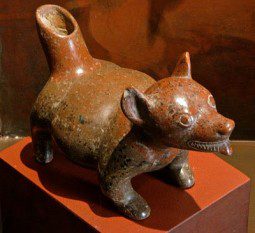 |
|
Colima Dog Pot |
Colima Dog Pot with spout |


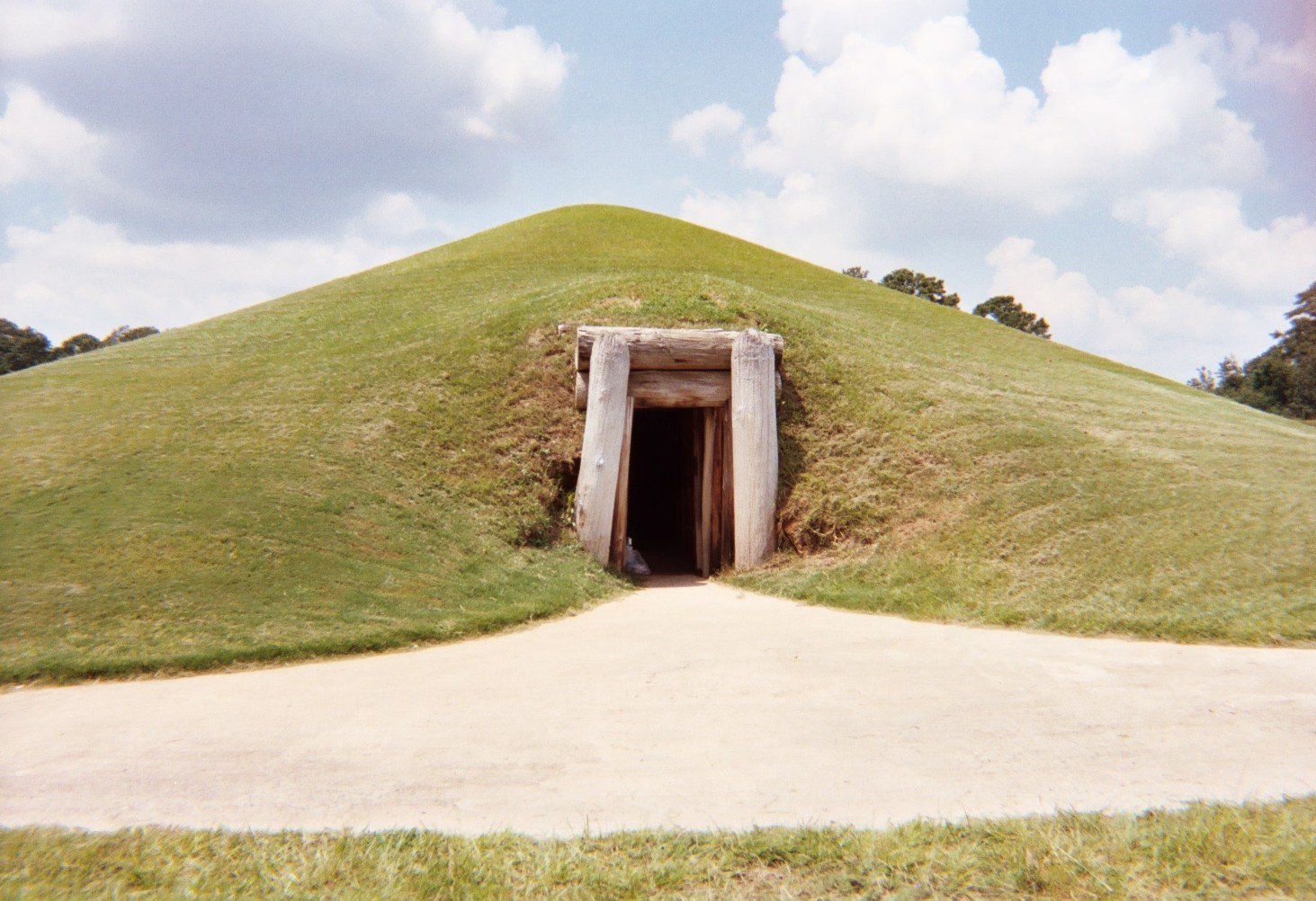

Pingback: Looking Back in Time; Pre-Columbian Dog Breeds! | Daycare & Grooming Blog